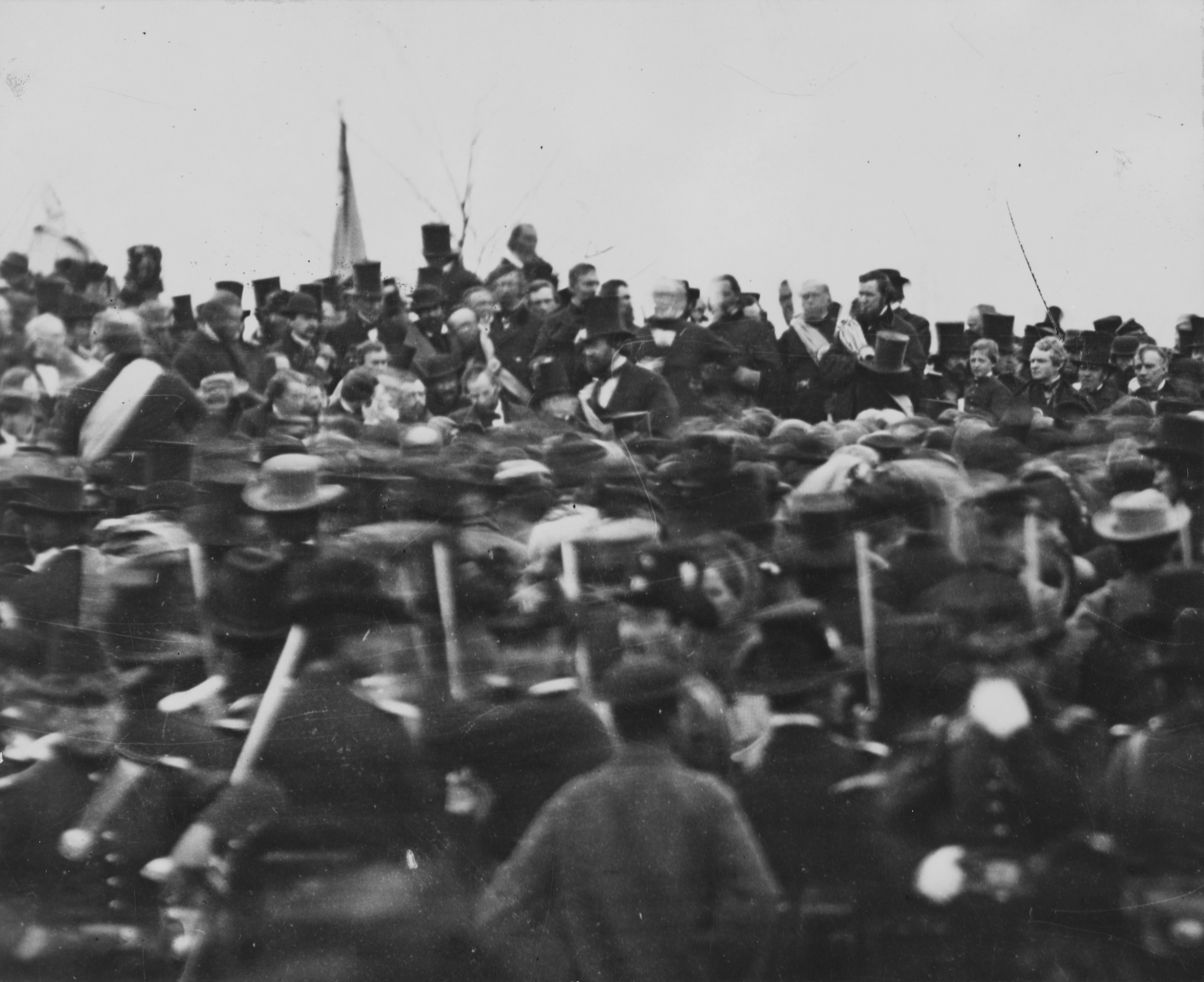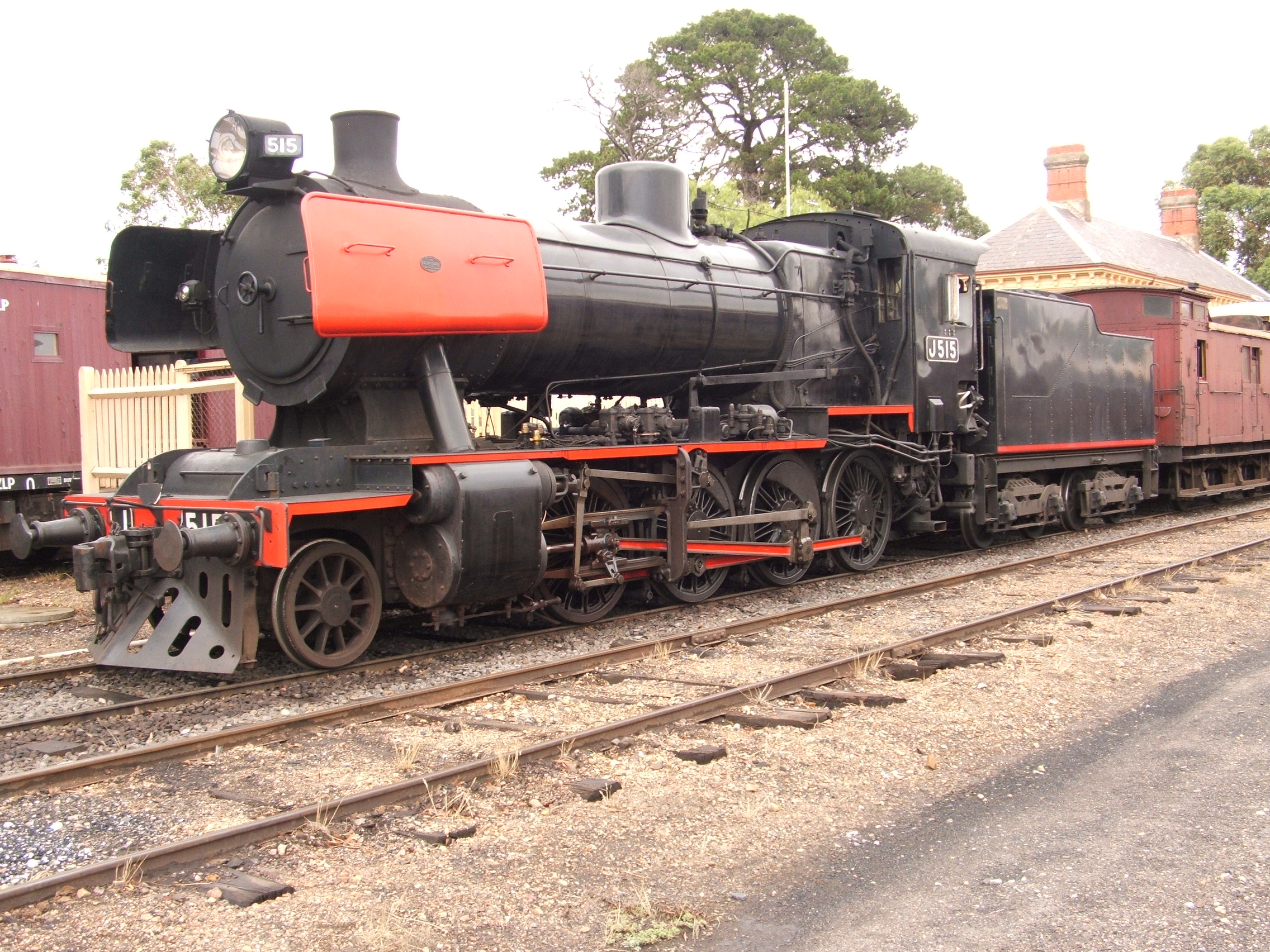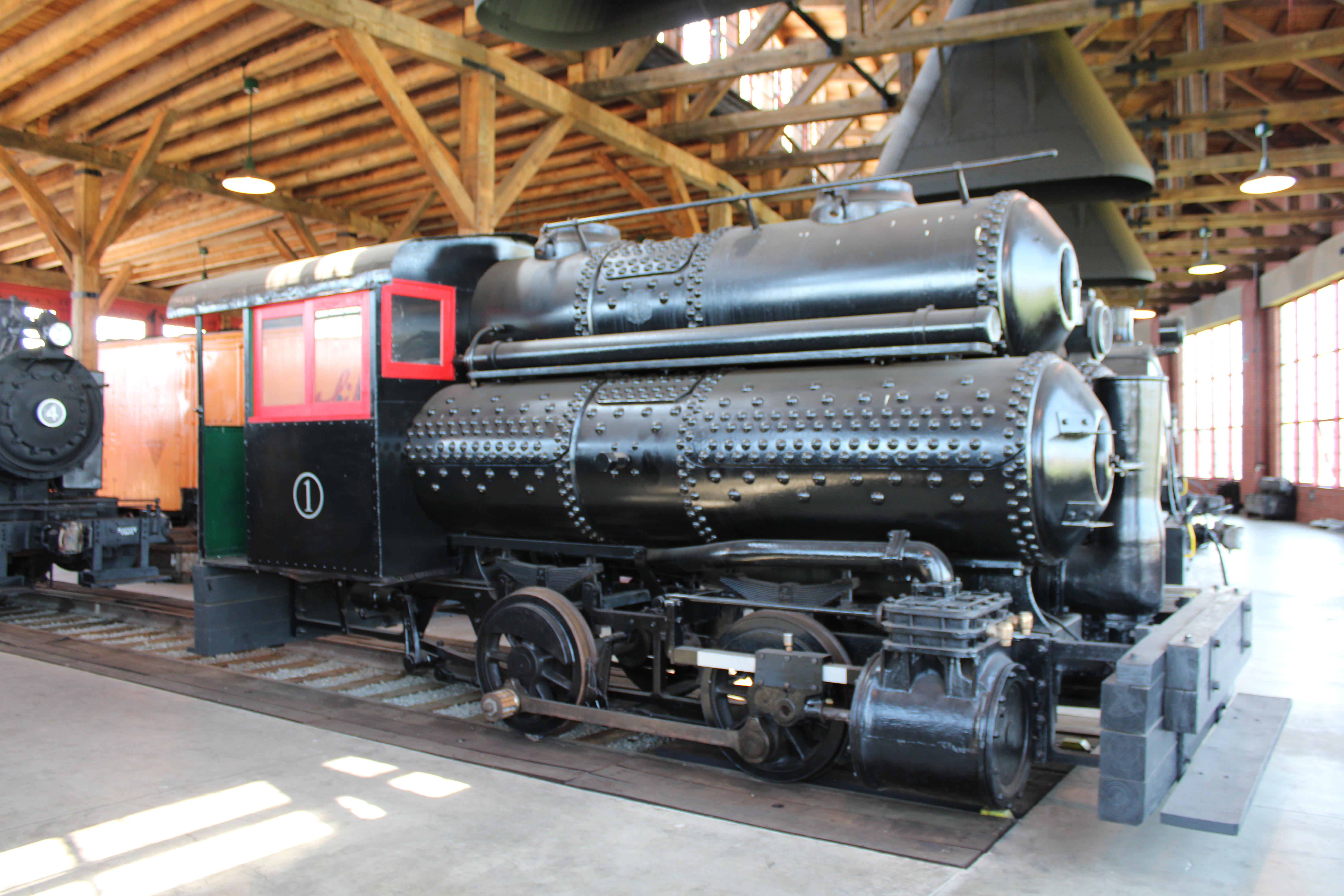|
Gettysburg Railroad (1976–1996)
The Gettysburg Railroad was a short-line heritage railroad that operated in Pennsylvania from 1976 to 1996. The 23.4 mi (37.7 km) line ran from Gettysburg to Mount Holly Springs. The railroad shipped freight for local companies and interchanged with CSX Transportation in Gettysburg and Conrail at Carlisle Junction in Mount Holly Springs. It also operated a tourist railroad under a subsidiary, Gettysburg Passenger Services. History The railroad was built in the late 19th century and opened in 1891 as the Gettysburg and Harrisburg Railway. The line was later leased to the Reading Railroad and operated as the "Gettysburg Branch." Following the Reading's bankruptcy in 1971, it sold portions of its assets to the new-formed Conrail in 1976, however the Gettysburg branch was not included in the transfer. The branch was acquired by the Pennsylvania Department of Transportation, which then sold the line to a new company, the Blairsville & Indiana Railroad, in 1976. The lat ... [...More Info...] [...Related Items...] OR: [Wikipedia] [Google] [Baidu] |
|
 |
Gettysburg, Pennsylvania
Gettysburg (; non-locally ) is a borough and the county seat of Adams County in the U.S. state of Pennsylvania. The Battle of Gettysburg (1863) and President Abraham Lincoln's Gettysburg Address are named for this town. Gettysburg is home to the Gettysburg National Military Park, where the Battle of Gettysburg was largely fought; the Battle of Gettysburg had the most casualties of any Civil War battle but was also considered the turning point in the war, leading to the Union's ultimate victory. As of the 2020 census, the borough had a population of 7,106 people. History Early history In 1761, Irishman Samuel Gettys settled at the Shippensburg-Baltimore and Philadelphia-Pittsburgh crossroads, in what was then western York County, and established a tavern frequented by soldiers and traders. In 1786, the borough boundary was established, with the Dobbin House tavern (established in 1776) sitting in the southwest. As early as 1790, a movement seeking to split off the western ... [...More Info...] [...Related Items...] OR: [Wikipedia] [Google] [Baidu] |
 |
Canadian National Railway
The Canadian National Railway Company (french: Compagnie des chemins de fer nationaux du Canada) is a Canadian Class I railroad, Class I freight railway headquartered in Montreal, Quebec, which serves Canada and the Midwestern United States, Midwestern and Southern United States. CN is Canada's largest railway, in terms of both revenue and the physical size of its rail network, spanning Canada from the Atlantic coast in Nova Scotia to the Pacific coast in British Columbia across approximately of track. In the late 20th century, CN gained extensive capacity in the United States by taking over such railroads as the Illinois Central. CN is a public company with 22,600 employees, and it has a market cap of approximately CA$90 billion. CN was government-owned, having been a Crown corporations of Canada, Canadian Crown corporation from its founding in 1919 until being privatized in 1995. , Bill Gates is the largest single shareholder of CN stock, owning a 14.2% interest throu ... [...More Info...] [...Related Items...] OR: [Wikipedia] [Google] [Baidu] |
|
Huntingdon And Broad Top 38
Huntingdon and Broad Top Mountain Railroad and Coal Co. 38 is a preserved 2-8-0 "Consolidation" type steam locomotive. It was built by Baldwin in April 1927 for use on the Huntingdon and Broad Top Mountain Railroad and Coal Company in south central Pennsylvania in the United States, which commonly used the locomotive to pull short-distance freight trains, as well as occasional passenger trains, until the railroad shut down operations in 1954. The locomotive was subsequently acquired by the Rail City Historical Museum in Sandy Creek, New York for static display. In the late 1960s, No. 38 was sold to the Livonia, Avon and Lakeville Railroad in Lakeville, New York, who restored the locomotive to operating condition to pull their excursion trains. In 1977, the locomotive was sold again to the Gettysburg Railroad, which used the locomotive to pull their own tourist trains until 1986, when No. 38 was transferred to the Knox and Kane Railroad to be used there. The locomotive had been re ... [...More Info...] [...Related Items...] OR: [Wikipedia] [Google] [Baidu] |
|
 |
Steam Railroading Institute
The Steam Railroading Institute is located at 405 South Washington Street, Owosso, Michigan. It was founded in 1969 as the Michigan State University (MSU) Railroad Club. It became the Michigan State Trust for Railway Preservation, and later adopted its present name. The Steam Railroading Institute is an organization dedicated to the preservation, restoration, and operation of historical railroad equipment and items. It operates a heritage railroad which offers occasional passenger excursion trains using steam locomotives: ex-Pere Marquette 1225 and Chicago and North Western Railway 175. History The Steam Railroading Institute, dedicated to educating the public about steam-era railroad technology, is the product of the Michigan State Trust for Railway Preservation Inc. For many years, the MSTRP centered on a single steam locomotive, former Pere Marquette Railway No. 1225. After 1225's retirement, the locomotive was donated to Michigan State University. Chesapeake and Ohio Railroa ... [...More Info...] [...Related Items...] OR: [Wikipedia] [Google] [Baidu] |
 |
2-8-0
Under the Whyte notation for the classification of steam locomotives, represents the wheel arrangement of two leading wheels on one axle, usually in a leading truck, eight powered and coupled driving wheels on four axles, and no trailing wheels. In the United States and elsewhere, this wheel arrangement is commonly known as a Consolidation, after the Lehigh and Mahanoy Railroad’s ''Consolidation'', the name of the first 2-8-0.White, John H. Jr. (1968). ''A history of the American locomotive; its development: 1830-1880''. New York: Dover Publications, p. 65. The notation 2-8-0T indicates a tank locomotive of this wheel arrangement, the "T" suffix indicating a locomotive on which the water is carried in side-tanks mounted on the engine rather than in an attached tender. The Consolidation represented a notable advance in locomotive power. After 1875, it became "the most popular type of freight locomotive in the United States and was built in greater quantities than any other si ... [...More Info...] [...Related Items...] OR: [Wikipedia] [Google] [Baidu] |
 |
Mississippian Railway
The Mississippian Railway is a short line railroad operating from Amory, Mississippi, to Fulton, Mississippi. It is owned and operated by the Itawamba County Railroad Authority. The MSRW interchanges with the BNSF Railway at Amory, Mississippi. The MSRW's shops are also located in Amory. History The Mississippian Railway was established in 1923 primarily to haul lumber products from Fulton south to the interchange with the Frisco Railway in Amory. In 1944 a bentonite plant was built in Smithville to take advantage of a large deposit discovered there which led to a surge in business for the line and its nickname ''The Bentonite Road''. By 1968 the bentonite deposits near Smithville had been depleted and the plant closed, however several industries had moved to Fulton and continued to provide traffic for the railroad. In the late 1970s, construction of the Tennessee–Tombigbee Waterway threatened to flood about nine miles of track. The U.S. Army Corps of Engineers ... [...More Info...] [...Related Items...] OR: [Wikipedia] [Google] [Baidu] |
 |
Baldwin Locomotive Works
The Baldwin Locomotive Works (BLW) was an American manufacturer of railroad locomotives from 1825 to 1951. Originally located in Philadelphia, it moved to nearby Eddystone, Pennsylvania, in the early 20th century. The company was for decades the world's largest producer of steam locomotives, but struggled to compete as demand switched to diesel locomotives. Baldwin produced the last of its 70,000-plus locomotives in 1951, before merging with the Lima-Hamilton Corporation on September 11, 1951, to form the Baldwin-Lima-Hamilton Corporation. The company has no relation to the E.M. Baldwin and Sons of New South Wales, Australia, a builder of small diesel locomotives for sugar cane railroads. History: 19th century Beginning The Baldwin Locomotive Works had a humble beginning. Matthias W. Baldwin, the founder, was a jeweler and whitesmith, who, in 1825, formed a partnership with machinist David H. Mason, and engaged in the manufacture of bookbinders' tools and cylinders fo ... [...More Info...] [...Related Items...] OR: [Wikipedia] [Google] [Baidu] |
 |
Age Of Steam Roundhouse
The Age of Steam Roundhouse Museum, Sugarcreek, Ohio, United States, is a museum roundhouse housing steam and diesel locomotives, passenger cars and other railroad equipment. History The roundhouse was built by Jerry Joe Jacobson, former CEO of the Ohio Central Railroad System (OCRS). In October 2008, Jacobson sold his interest in OCRS to Genesee & Wyoming, including the track, modern equipment, and most of the workshops and depots. Jacobson kept a collection of vintage steam and diesel locomotives, other old equipment, and a depot at Sugarcreek, Ohio. He bought 34 acres in Sugarcreek and began constructing a roundhouse to house his collection. The roundhouse building was completed in 2011 and all of the steam locomotives, along with a few other select pieces of rolling stock in Jacobson's collection, were moved inside the roundhouse that same year. It was the "first large roundhouse built in the United States since 1951," with the previous building being Nickel Plate Road's round ... [...More Info...] [...Related Items...] OR: [Wikipedia] [Google] [Baidu] |
|
Ohio Central Railroad System
The Ohio Central Railroad System is a network of ten short line railroads operating in Ohio and western Pennsylvania. It is owned by Genesee & Wyoming Headquartered in Coshocton, Ohio, the system operates of track divided among 10 subsidiary railroads. Most of the system's routes were divested from Class I railroads and connect industries to the Class I railroads. The Ohio Central operates on track owned by other entities, including a line from Newark, Ohio to Mount Vernon, Ohio owned by CSX and the old Panhandle Route, owned by the State of Ohio. Railroads in the system Ohio Central's rail system comprises * Ohio Central Railroad * Ohio Southern Railroad * Columbus and Ohio River Rail Road, the former Pennsylvania Railroad Panhandle Route * Mahoning Valley Railway * Ohio & Pennsylvania Railroad * Warren & Trumbull Railroad * Youngstown & Austintown Railroad * Youngstown Belt Railroad * Pittsburgh & Ohio Central RailroadFormerly the Pittsburgh Industrial Railroad, ... [...More Info...] [...Related Items...] OR: [Wikipedia] [Google] [Baidu] |
|
|
Jerry Jacobson
Jerry may refer to: Animals * Jerry (Grand National winner), racehorse, winner of the 1840 Grand National * Jerry (St Leger winner), racehorse, winner of 1824 St Leger Stakes Arts, entertainment, and media * ''Jerry'' (film), a 2006 Indian film * "Jerry", a song from the album ''Young and Free'' by Rock Goddess * Tom and Jerry (other) People * Jerry (given name), including a list of people and fictional characters with the name * Harold A. Jerry, Jr. (1920–2001), New York politician * Thomas Jeremiah (d. 1775), commonly known simply as "Jerry", a free Negro in colonial South Carolina Places * Branche à Jerry, a tributary of the Baker River in Quebec and New Brunswick, Canada * Jerry, Washington, a community in the United States Other uses * Jerry (company) * Jerry (WWII), Allied nickname for Germans, originally from WWI but widely used in World War II * Jerry Rescue (1851), involving American slave William Henry, who called himself "Jerry" See also * Geri (disamb ... [...More Info...] [...Related Items...] OR: [Wikipedia] [Google] [Baidu] |
|
.jpg) |
4-6-2
Under the Whyte notation for the classification of steam locomotives, represents the wheel arrangement of four leading wheels on two axles, six powered and coupled driving wheels on three axles and two trailing wheels on one axle. The locomotive became almost globally known as a Pacific type. Overview The introduction of the design in 1901 has been described as "a veritable milestone in locomotive progress". On many railways worldwide, Pacific steam locomotives provided the motive power for express passenger trains throughout much of the early to mid-20th century, before either being superseded by larger types in the late 1940s and 1950s, or replaced by electric or diesel-electric locomotives during the 1950s and 1960s. Nevertheless, new Pacific designs continued to be built until the mid-1950s. The type is generally considered to be an enlargement of the Atlantic type, although its prototype had a direct relationship to the Ten-wheeler and Prairie, effectively ... [...More Info...] [...Related Items...] OR: [Wikipedia] [Google] [Baidu] |
 |
Canadian Pacific Railway
The Canadian Pacific Railway (french: Chemin de fer Canadien Pacifique) , also known simply as CPR or Canadian Pacific and formerly as CP Rail (1968–1996), is a Canadian Class I railway incorporated in 1881. The railway is owned by Canadian Pacific Railway Limited, which began operations as legal owner in a corporate restructuring in 2001. Headquartered in Calgary, Alberta, the railway owns approximately of track in seven provinces of Canada and into the United States, stretching from Montreal to Vancouver, and as far north as Edmonton. Its rail network also serves Minneapolis–St. Paul, Milwaukee, Detroit, Chicago, and Albany, New York, in the United States. The railway was first built between eastern Canada and British Columbia between 1881 and 1885 (connecting with Ottawa Valley and Georgian Bay area lines built earlier), fulfilling a commitment extended to British Columbia when it entered Confederation in 1871; the CPR was Canada's first transcontinental railw ... [...More Info...] [...Related Items...] OR: [Wikipedia] [Google] [Baidu] |